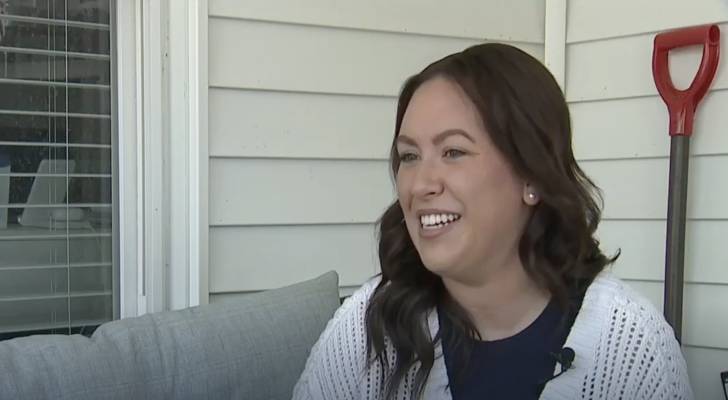Francesca Barrett, a Kent State graduate, has never missed a student loan payment — even during the pandemic. But that doesn’t mean she’s not struggling with the remainder of her $52,000 student loan.
“My first paycheck of the month covers rent, student loan, groceries for two weeks, and I get about $30 left over,” she told News 5 Cleveland. “I look at that number that’s in my bank account two to three times a week.”
Barrett is one of the lucky ones. She’s not in default, which puts her in a better position than over five million federal borrowers who are (and four million more nearing default). But that protection doesn’t apply to those who fall behind because starting May 5, the U.S. Department of Education will resume involuntary collections on defaulted loans, ending a pandemic-era pause.
The pandemic pause was first enacted in March 2020 under the Trump administration, with extensions continuing through the Biden administration until late 2023. Even though payments resumed last fall, collection activity stayed on hold — until now. And involuntary collections mean the lowest-income borrowers could be forced to make payments.
“Sixty-two percent of borrowers are not currently in good standing on their payments,” said Phil Wallace with College Now Greater Cleveland, a nonprofit dedicated to helping college students. Those borrowers could face serious consequences. According to CNBC, that includes:
-
Wage garnishment: Up to 15% of your disposable income can be seized, as calculated by the federal government.
-
Tax refund offset: The government can take your entire federal tax refund.
-
Social Security garnishment: Retirees can lose up to 15% of their monthly benefits — but must be left with at least $750.
-
Seizure of state refunds, lottery winnings, and even bank account levies, in some cases.
Some good news? Borrowers will receive notice before collections begin.
“You’ll have a 30-day notification before [wage garnishment] would begin,” said Wallace.
Borrowers will begin receiving warning notices within the next two weeks, the Department of Education Department confirmed.
Carolina Rodriguez, director of the Education Debt Consumer Assistance Program in New York, is especially concerned about how the resumed collections could impact retirees.
“Losing a portion of their Social Security benefits to repay student loans could mean not having enough for food, transportation to medical appointments, or other basic necessities,” Rodriguez said.
For Social Security payments, a 65-day notice must be given before the seizure of Social Security benefits, shared higher education expert Mark Kantrowitz.
Read more: Here are 5 ‘must have’ items that Americans (almost) always overpay for — and very quickly regret. How many are hurting you?
Borrowers who are up to date on payments won’t be affected by collections, but should still stay informed. This change only applies to those who have defaulted. If you are in default, you aren’t without choices — but the clock is ticking. Here are your options:
Rehabilitation is a one-time option that allows you to make nine consecutive, affordable payments to remove your loan from default. But if you’ve used this before, you can’t use it again, according to federal rules.
Consolidating defaulted loans can provide immediate relief and a path into an income-driven repayment plan — but may lead to higher interest costs over time. It’s also not available if your wages are already being garnished, so now is a good time to see if you’re eligible.
If you’re not in default yet, income-driven repayment options, like the Income-Based Repayment (IBR), Pay As You Earn (PAYE), and SAVE Plan, could reduce your monthly payment based on your income — and even lead to loan forgiveness over time.
Borrowers can request retroactive forbearance (temporary postponement of loan payments) to cover missed payments or apply for a temporary deferment while enrolling in an income-driven plan. Forbearance may be available due to hardship, serving in the military, or if you work as a teacher. Visit studentaid.gov to see which options may be available to you.
Even if you’re not in default yet, the resumption of collections is a wake-up call for many borrowers. Here’s what you can do now:
-
Log in to your student loan account: Check your loan status, payment history, and current servicer. If you’re not sure where to start, visit studentaid.gov.
-
Watch for notices: The Department of Education must give 30 days’ notice before wage garnishment and 65 days before Social Security garnishment. You may be entitled to a hearing if garnishment would cause hardship.
-
Reassess your tax withholdings: If you usually receive a large tax refund, adjusting your W-4 to reduce withholdings could increase your monthly take-home pay — buffering the impact if garnishment begins and preventing the government from seizing a large tax refund.
-
Ask for help: Nonprofits like College Now Greater Cleveland offer free help evaluating your options. Similar organizations or legal aid groups can assist in other states.
This article provides information only and should not be construed as advice. It is provided without warranty of any kind.




Add Comment